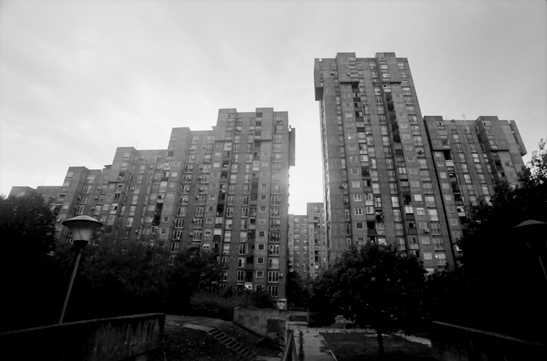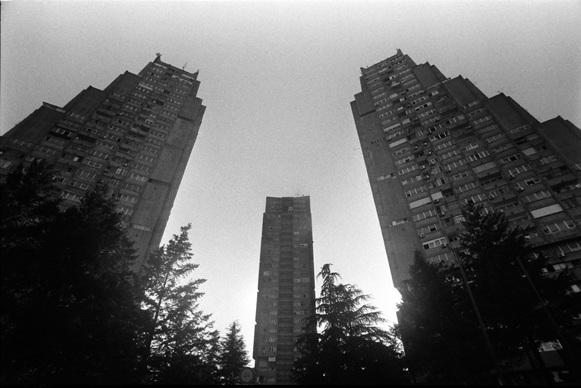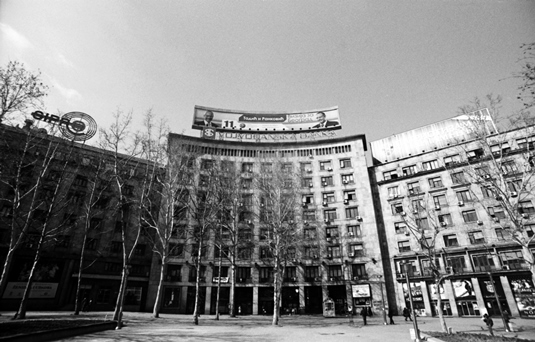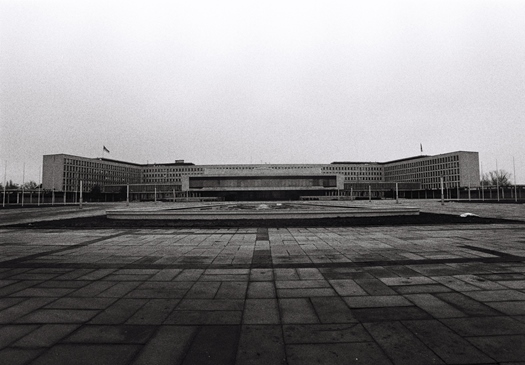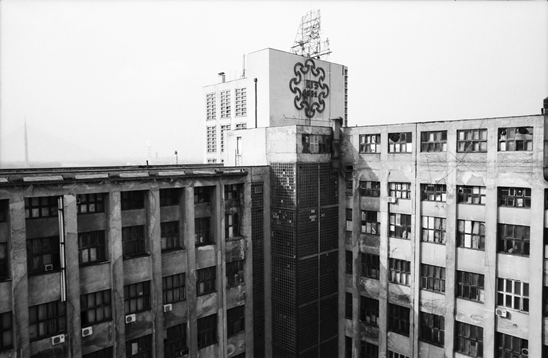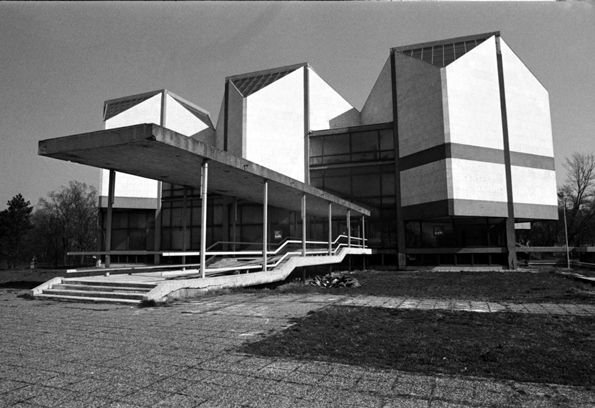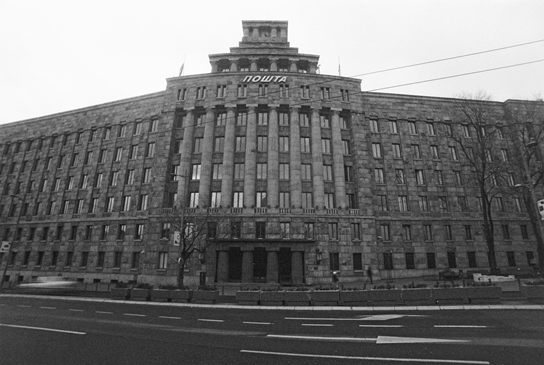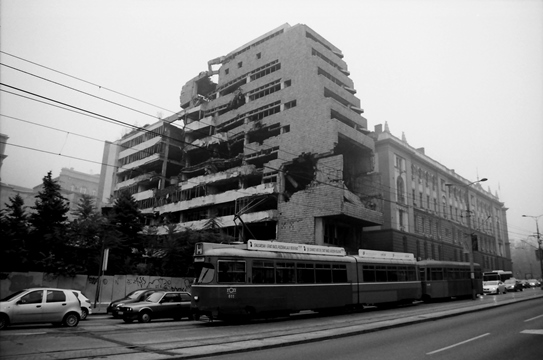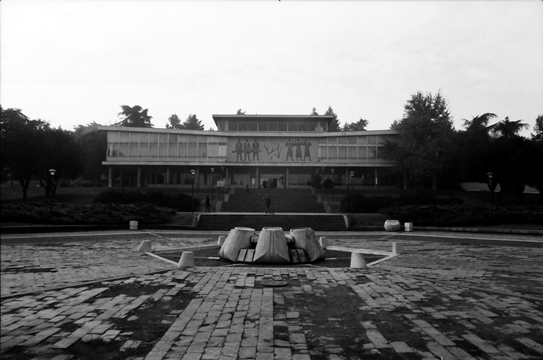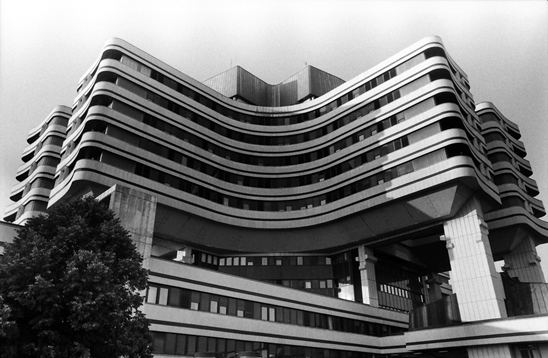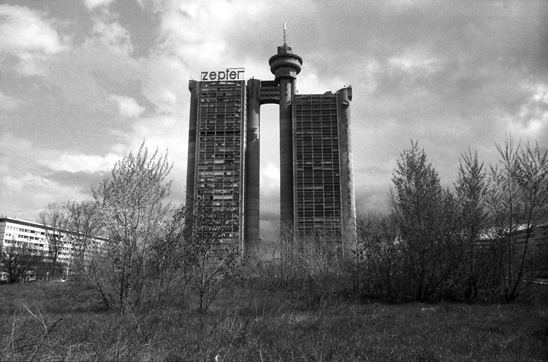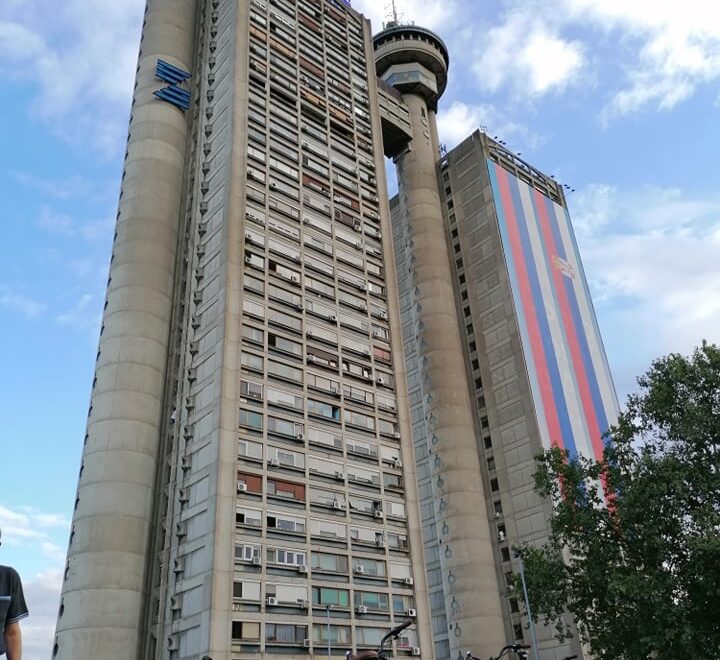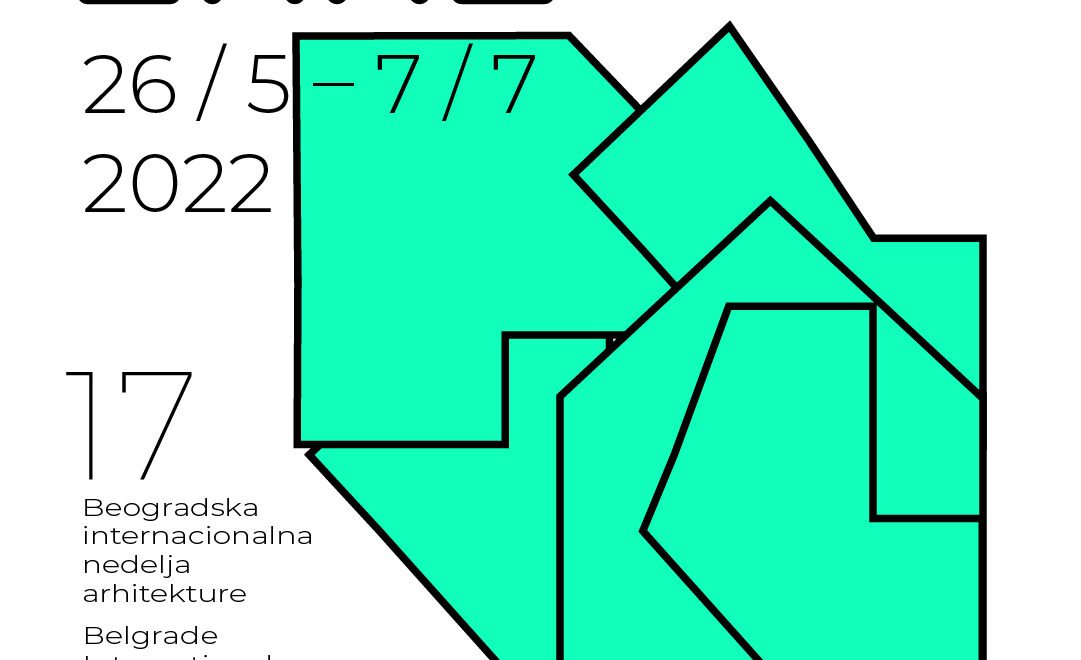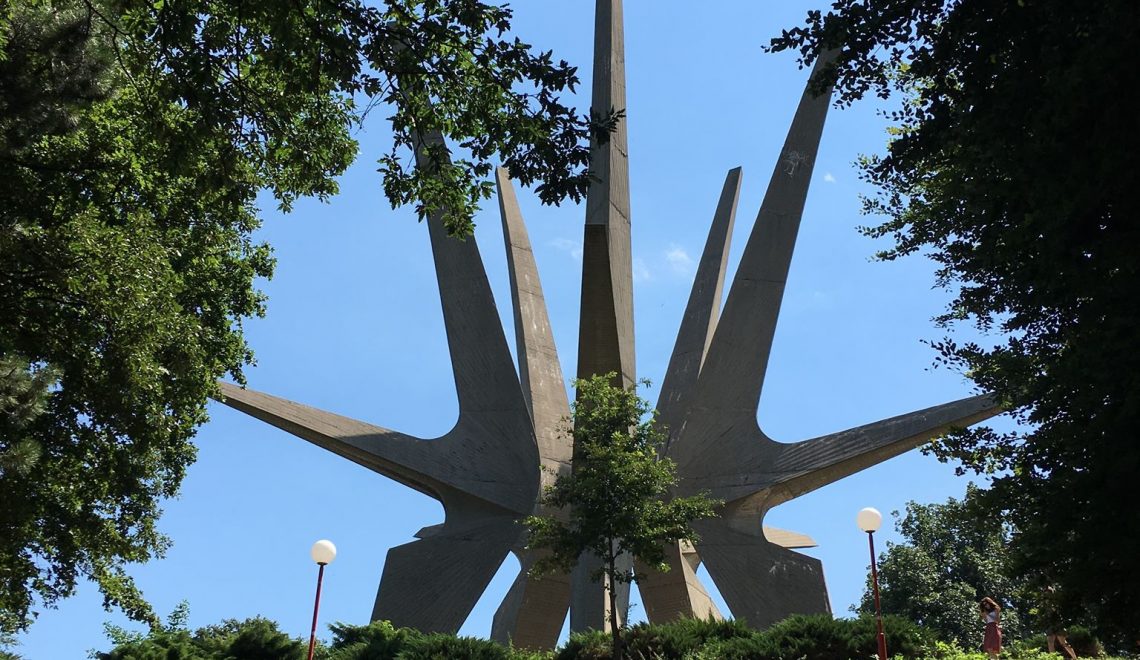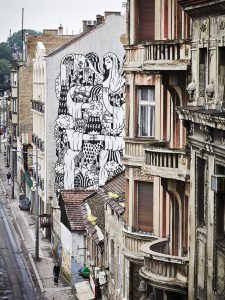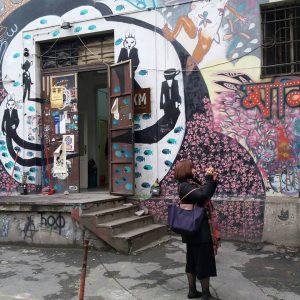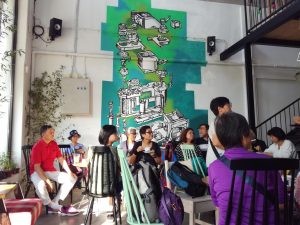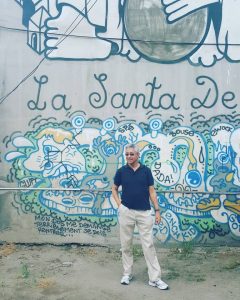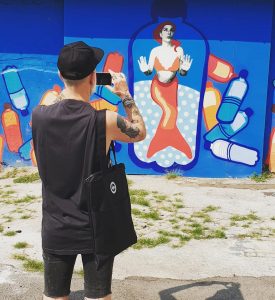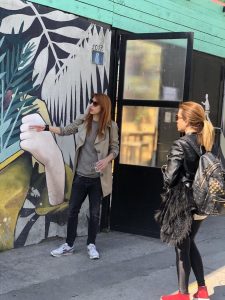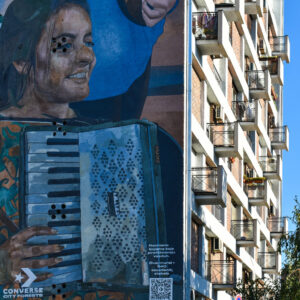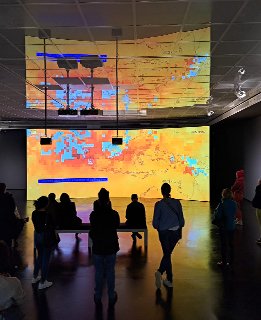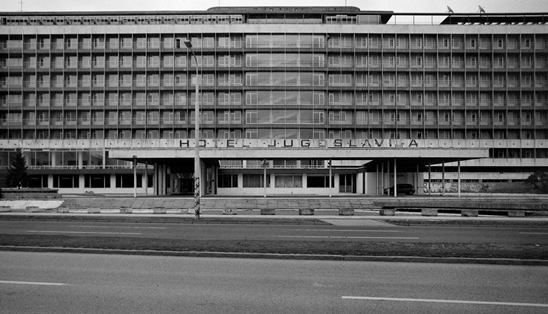
First urban plans that envisioned expansion of the Belgrade to the left bank of the Sava river were made in 1923, but the lack of resources and manpower for drying wetlands postponed the whole process for an indefinite time. In order to meet the needs of a growing population that occurred due to migration and high birth rates, from the start the main aim of the project for New Belgrade was to build as many buildings and as soon as possible. The city on the left bank of the Sava river was conceived as a residential but also as an administrative center of the new Yugoslavia, and it was supposed to become, metaphorically, the embodiment of new social relations.
If you would like to get to know Yugoslav modern architecture in New Belgrade and beyond we suggest booking the Yugoslav Modern Architecture tour.
Blocks (New Belgrade)
Three years after the end of World War II, on 11th April 1948, the Youth Working Brigades began the continual building of New Belgrade blocks. This date is taken as the creation day of New Belgrade, but only in 1952, the municipality of New Belgrade was established officially. For years, New Belgrade was the largest construction site in the Socialist Federal Republic of Yugoslavia and a source of great pride for the communist authorities who oversaw the project.
Before the construction itself began, the terrain was smoothed with sand from the Sava and Danube rivers in order to drain wetland and raise the terrain beyond the reach of the floodwaters and groundwater. Only during the first three years of the construction, more than 100,000 people (of all ages) and engineers from all over Yugoslavia worked on construction sites. Workers did not have the necessary machinery, so mixing of the concrete and carrying of the sand was done by hand, and the horse-drawn carts were used only for lifting very heavy loads.
The main physical characteristic of New Belgrade is its flat terrain, which is a great contrast to the old part of the city, which was built on 32 hills.
Comprehensive brutalist architectural approach, with the absence of the human scale of urban spaces, has led to the fact that many residential buildings, and even entire residential neighborhoods, look monumental and cumbersome. Rigid zoning, which resulted from the mega-traffic matrices with wide boulevards, inevitably tore new town, forcing its inhabitants to be more oriented toward their “micro-communities” – blocks. “Block” was and still is the unit of measurement of New Belgrade.
New Belgrade has become a playground of different types of industrialized and prefabricated constructions, in order to achieve greater rationalization in the production of housing. This approach has led to two significant negative effects: the first one is the exhaustion of economic resources, because the series was not sufficiently large to justify the “industrial” production, and the second one is the unification of urban and residential structures, which led to the loss of identity of housing units. Over time, an attempt for identification or differentiation of at least newly built entities emerged, but economic reasons did not allow sufficient qualitative progress.
Residential structures within one block were different from those in neighboring ones, but mutually they remained the same or very similar.
However, people have constantly had the need for identification of their habitat, which is more and more manifested today, especially within young people, who, in their own way, build the image of New Belgrade.
Rudo-Eastern Gate
Rudo is a complex of three large buildings, each with 27 floors, over 100 meters in height and represents one of the highest buildings in Serbia. Though officially named Rudo (after a Bosnian town), the buildings are known as the Eastern Gate of Belgrade. The name “Rudo” gave a Belgrade architect Dragoljub Mićović, who at the time of construction of the three skyscrapers exercised supervision.
All three buildings are step-like and triangular-shaped, built in a circle so it always visually appears than one is between the other two. Buildings styled Rudo 1, Rudo 2 and Rudo 3, were settled in 1976. Since the 1990s, due to the lack of maintenance, buildings were known for elevator and water pump problems. Reconstruction began in April 2008.
Skyscrapers are located close to the highway and with its size and monumentality represent a symbolic gate at the entrance to Belgrade for travelers coming from the east. The buildings were built in the style of socialist realism.
Dom Sindikata-Trade Union Hall
Dom Sindikata building at Nikola Pašić Square was built from 1947 till 1955 by the project of the architect Branko Petričić. The building is done in the spirit of dominant socialist realism with the influence of late modernism. It was named after its users – trade unions. In 2013, the Government of the Republic of Serbia declared the building as a monument of culture in Belgrade because of its significant architectural, urban, cultural and historic values.
The building is multi-purposed, and beside the office space, there are four halls in it. They were conceived as spaces for hosting various cultural meetings, political events, film screenings and festivals, which remained permanent characteristics of the Dom Sindikata building. The large hall can accommodate up to 1,600 visitors.
SIV PALACE
The building of the Federal Executive Council (SIV) is one of the three firstly built objects in New Belgrade, and it was completely finished in 1962 after several years of work. Construction of the building, in block 13, began by following the winning competition design of the architect Vladimir Potočnjak and his architectural team from Zagreb in classicistic style. However, the building was completed following the project of the architect Mihajlo Janković in the spirit of the international style of architecture and today it is considered an important example of the Yugoslav post-war architecture.
The first conference of the Non-Aligned Movement in Belgrade was held in a newly opened building of SIV, which was, at that time, the nicest and the most original modern space in the country.
The building contained 956 working rooms, 79 halls and ceremonial rooms, 91 utility room and two garages. Six main halls symbolically represent the six republics of the former Yugoslavia, and the interior design itself was supposed to express the power, size, and stability of the new Yugoslavia.
Today, this is an administrative building that hosts several ministries, some government bodies, institutions, and administration.
BIGZ
The building of the State Printing House (BIGZ) near to the Mostar junction was built by the winning competition design done by the architect Dragiša Brašovan and it is one of his most important buildings in modern style. It is also considered to be one of the most recognizable symbols of the modern architecture of Belgrade and beyond.
The construction lasted from 1937 to 1940, even though the competition was announced in 1933. The original location was near to the Kalenić market, but the architect himself protested against this, so a new location, which had better qualities for such building, was selected.
Museum of Contemporary Art
Museum of Contemporary Art, built on the left bank of the river Sava (at the confluence of Sava river and the Danube), was open for the public on the 20th of October 1965. The building was realized on the basis of the first prize of architects Ivan Antić and Ivanka Raspopović obtained through a public urban-architectural competition. It represents a very significant architectural work of post-war Belgrade. The task of the museum was to follow the development of Yugoslav contemporary art.
Placed alone in the natural environment, its cubic form, composed out of six cubes with sliced angles for sloping roof surface and covered with glass is merged into an organic honeycomb structured unity, without excessive details. Unique, but specifically complex interior space, with no vertical partitions and corridors, is divided into five exhibition levels which are connected with stairs. With these levels, which are almost permeating one into the other, integration of spaces of different heights into a single unit was successfully implemented. In this way, it is possible that from the higher levels, from different angles, get a multitude of views from which to observe the exhibits at the lower levels.
The significance of the building comes from the virtually priceless artworks of Yugoslav artists of the twentieth century, which are part of the permanent exhibition. The museum building was declared as the cultural asset in 1987, and since then it is a subject of protection of the Institute for Protection of Cultural Monuments in Belgrade.
Hotel Yugoslavia
In 1969, on one of the most exclusive locations in Belgrade Hotel Yugoslavia was completed. It was designed by architect Lavoslav Horvat. Built in the international style of that time, it was officially the largest hotel in the former Yugoslavia.
Hotel Yugoslavia together with the buildings of SIV (The Federal Executive Council) and CK (The Central Committee) strongly represented tendencies of former Yugoslavia in the materialization of new ideas, especially related to the development of New Belgrade.
The hotel consisted out of 8 floors, 600 rooms, and 1,000 beds. It had two types of rooms: rooms overlooking the Danube (size of the room 24m2) and rooms overlooking Boulevard Nikola Tesla (size of the room 17m2). The hotel used to be visited by numerous officials and public figures such as Richard Nixon, Jimmy Carter, Queen Elizabeth II, Tina Turner, Neil Armstrong, and others.
In 1999 hotel was damaged by NATO bombing.
Today it is partially reconstructed, modernized and put to use.
Foreign investors are interested in considerable expansion and reconstruction of it. It is yet to be seen what will happen with the realization of these projects.
Main Post Office
The building of the Main Post Office, Main Telegraph and Postal Savings Bank was opened for operation in 1938, and it was built by the project done by the architects Josip Pičman and Vasilij Androsov in Takovska Street, next to the building of the National Assembly.
The story of the building of the Main Post Office is connected to the Yugoslav competition announced in the summer of 1930. Josip Pičman designed the winning solution, which was modern in character, with its reduced and simple facade that did not fit the dominant architectural conception of the public buildings. That same year, a new competition was announced, but it was a narrower, internal competition with the purpose of remodeling the project that was adopted. Proposal of the architect Vasilij Androsov in academic style was adopted as the most appropriate one. This project emphasized monumentality, and by style, it could be categorized as high academicism.
The building of the Ministry of Defence and the General Staff of the Yugoslav Army – DSNO
The building of the General Staff built from 1957 till 1965 is designed by the architect Nikola Dobrović and it is his only completed building in Belgrade. Back in 1953, Dobrović won the first prize in the non-public competition for this building. The complex of buildings is treated as an architectural and urban challenge at the junction of Knez Miloš and Nemanja Street.
The monumental architectural composition of the building is a successful representative of Belgrade’s modern movement. Although formed out of two parts, which are separated by the city avenue, this building is, however, read as a whole. This is achieved by symmetrical equal parts, over the streets, which are then freely branched and are associated with the material, dynamics, and span. Three elements- materials dominate on the facade: red coral limestone (from a quarry near Kosjerić in Serbia), white marble (Brač, Dalmatia) and aluminum windows.
In 1999 when the building was badly damaged in the NATO bombing, it was only 34 years old. Republic Institute for Protection of Cultural Monuments declared this building as a cultural asset in 2005. However, its fate, which is still in the hands of the Serbian government, remains uncertain.
House of Flowers and Museum of Yugoslav History
The House of Flowers was built in 1975 as a winter garden of the former president Josip Broz Tito. It is situated in Botićeva Street 6 in Dedinje, and designed by the architect Stejpan Kralj. When Tito died on 4th May 1980, in just a few days the winter garden was converted into his final resting place.
Before the reconstruction, which was led by the engineer Dragomir Gavrilović, a fountain was located in the central part of the complex, and around, there were rooms for work and leisure. By the reconstruction, the fountain was removed from the central part and the tomb was built on that place. Tombstone marble slab was built out of the white marble from Venčac and it was really grandiose in size – 80 centimeters high, one meter and a half wide, two and a half meters long and nine tons heavy. It was placed over the grave with the help of special cranes.
Today, House of Flowers belongs to the complex of the Museum of Yugoslav History, together with the Museum 25th May and the Old Museum, and it is open to the public. Since the opening in 1982 until today, House of Flowers was visited by more than seventeen million visitors.
VMA- The Military Medical Academy
The Military Medical Academy complex covers the area of 21 hectares. It is located in the Banjica hill area of Belgrade. It was designed by the award-winning architects’ colonel Josip Osojnik and Slobodan Nikolić. Their project won the competition in 1973. The construction was finished in 1981 and the hospital officially moved into a new building and began operations on January 1, 1982.
The hospital building itself is a 14-story building covering 180.000 square meters of space divided into more than 60 different technical-technological entities with 6,000 premises.
West Gate of Belgrade – Center Geneks
After 10 years of building in Block 33, the tallest building in Belgrade – Center Geneks was built next to the highway. It was designed by architect Mihajlo Mitrović. His most significant building, built in modern building techniques, was symbolically named West Gate of Belgrade.
The building was functionally and physically divided into two towers, commercial and residential. At the top of the building circular restaurant was placed, but the equipment for the rotation was never installed. The total height of the building is 124m, the higher the tower (intended for housing) has 30 floors and a total of 184 apartments and a commercial tower (closer to the highway) has 39 floors.
Unfortunately, the commercial tower and the restaurant are today completely out of order. It is unbelievable that this touristic potential (a unique perspective for viewing the city), which would certainly attract both tourists and Belgrade residents themselves, remains empty.
Authors: Maja Zuza and Bojana Pavlicevic
Translation: Dragana Ciprijanovic
Photos: David Pujado
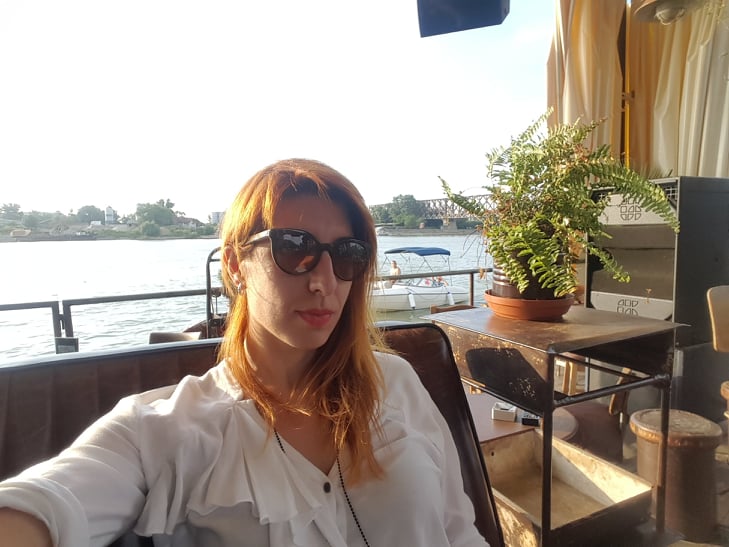
Writer. Blogger. Traveler. Researcher. Electronic Music Lover.

